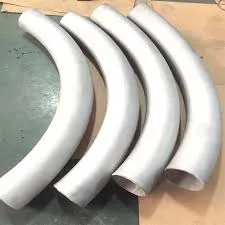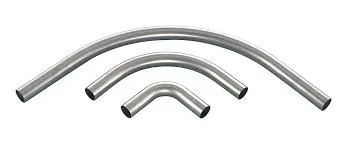90 degree steel pipe bends are similar to elbows but bending radius is larger or equal to 3D, the common used type is 3D and 5D bend. It is usually used in the oil and gas industries. We usually provide steel pipe bends and elbows in material of alloy steel, carbon steel and stainless steel.
Buttwelding Fittings are used in a piping system to change direction or function of media, to branch off, reduce pipe size or attach auxiliary equipment. They are availbale in multiple types as elbow, tee, cap, reducer, stub end and oelt, that produced in cold and hot forming based on stainless steel and carbon steel material.
Steel Pipe Bends and Elbows
Seel pipe bends and elbows are used to change direction in piping system. And connecting with pipeline for transfering medium such as water, air, oil, gas and so on. But there are some differences between them as following.
-
Process
Seamless steel pipe elbows are produced by hot pressing or cold pressing. While the pipe bends are used medium frequency bending in hot or cold methods. Whatever hot or cold method, it depends on the material.
-
Angle
For pipe elbows, they have angles of 45 degree, 90 degree and 180 degree. While pipe bends are 22.5 degree, 30 degree, 45 degree and 90 degree.
-
Radius
Steel pipe bends have larger radius than elbows. Usually the elbows have two types that long radius (1.5D) and short radius (1D). For pipe bends, the bending radius ≥3D.
-
Cost
It will use more original material for making steel pipe bends due to the larger raidus, that would spend more money on the steel pipes. In addtion that take more space and increase the freight in transporation. So steel pipe bend price is expensive than elbow in same size and material.
-
ស្តង់ដារ
Steel pipe elbows are manufactured in buttwelding fittings standard of ASME B16.9, but pipe bends are according to pipe standard that ASME B36.10 and ASME B36.19.
-
Tangent
The tangent length of steel pipe bends are 300 - 1500mm for both ends, while elbows do not have tangent.
















